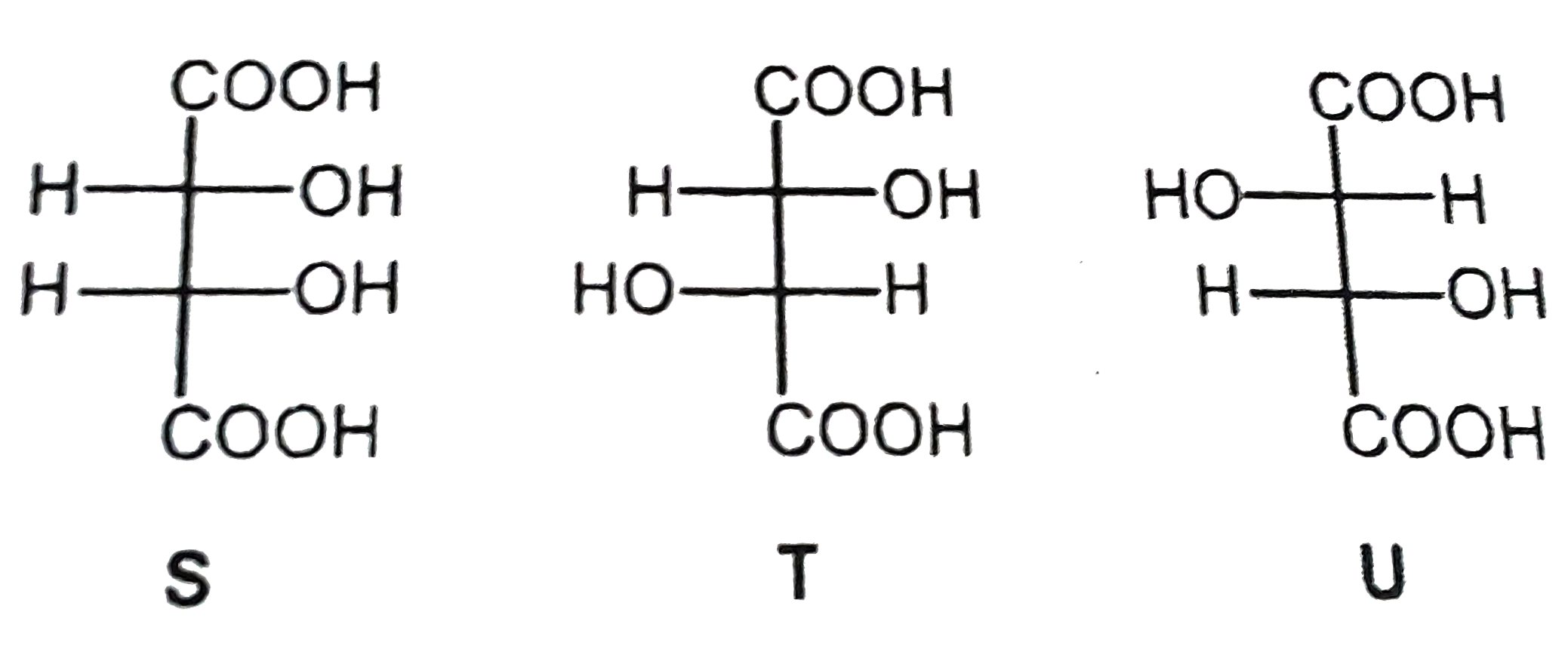P and Q are isomers of dicarboxylic acid C4H4O4. Both decolorize Br2/H2O. On heating, P forms the cyclic anydride.
Upon treatment with dilute alkaline KMnO4, p as well as Q could produce one or more than one from the S,T and U

Compounds formed from P and Q are, respectively:
Optically active S and optically active pair (T, U)
Optically inactive S and optically inactive pair (T, U)
Optically active pair (T, U) and optically active S
Optically inactive pair (T, U) and optically inactive S
The correct Answer is:B
Step by step video & image solution for P and Q are isomers of dicarboxylic acid C_(4)H_(4)O_(4). Both decolorize Br_(2)//H_(2)O. On heating, P forms the cyclic anydride. Upon treatment with dilute alkaline KMnO_(4), p as well as Q could produce one or more than one from the S,T and U Compounds formed from P and Q are, respectively: by Chemistry experts to help you in doubts & scoring excellent marks in Class 12 exams.
Updated on:21/07/2023Topper's Solved these Questions
- AROMATIC COMPOUNDSBOOK - RESONANCE ENGLISHCHAPTER - AROMATIC COMPOUNDSEXERCISE - Part - II JEE MAIN
20 Videos
- AROMATIC COMPOUNDSBOOK - RESONANCE ENGLISHCHAPTER - AROMATIC COMPOUNDSEXERCISE - JEE MAIN (Online Problem)
15 Videos
- AROMATIC COMPOUNDSBOOK - RESONANCE ENGLISHCHAPTER - AROMATIC COMPOUNDSEXERCISE - Part - IV Comprehension
13 Videos
- ALKYL HALIDE, ALCOHOL, PHENOL, ETHERBOOK - RESONANCE ENGLISHCHAPTER - ALKYL HALIDE, ALCOHOL, PHENOL, ETHEREXERCISE - ORGANIC CHEMISTRY(Alkyl Halide, Alcohol,Phenol,Ether)
56 Videos
- BASIC CONCEPTSBOOK - RESONANCE ENGLISHCHAPTER - BASIC CONCEPTSEXERCISE - ORGANIC CHEMISTRY(BASIC CONCEPTS)
27 Videos
Similar Questions
Draw structure Peroxodiphosphoric acid (H4P2O8)
View SolutionP4–––+H2O→No reaction
View SolutionFind the vector joining the points P(2,3,0)and Q(1,2,4)directed from P to Q.
View SolutionA carboxylic acid C2H4O2 reacts with an alcohol in the presence of H2SO4 to form a compound 'X'. The alcohol on oxidation with alkaline KMnO4 gives the same carboxylic acid, C2H4O2. Write the name and structure of (i) Carboxylic acid, (ii) alcohol and (iii) the compound 'X'.
View SolutionThe oxo-acids of P2O5 is H3PO4
View SolutionThe line segment joining the points (3, −4) and (1, 2) is trisected at the points P and Q . If the coordinates of P and Q are (p, −2) and (5/3, q) respectively. Find the values of p and q .
View SolutionRed P+Alkali →Na4P2O6+P2H4
View SolutionRed P+Alkali →Na4P2O6+P2H4
View SolutionThe 5th, 8thand 11thterms of a G.P. are p, q and s, respectively. Show that q2=ps.
View SolutionThe phosphorous containing compound produced in the reaction of H2SO4 with P2O5 is
View Solution
